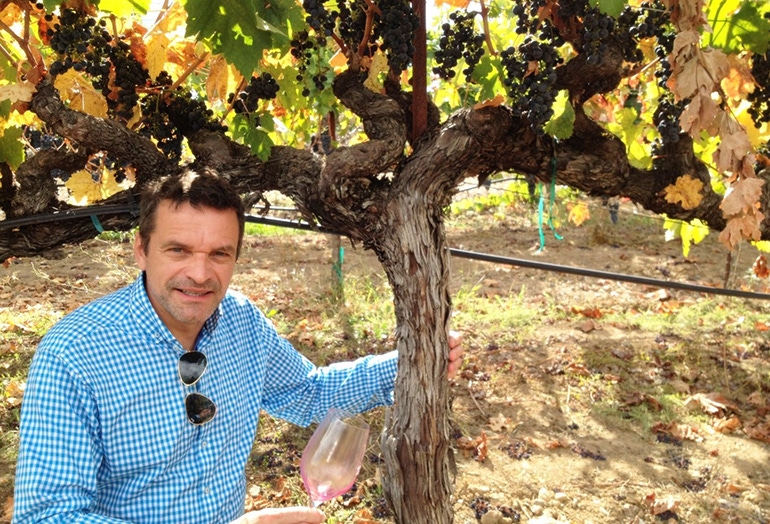
Sometimes the old models that have worked for years can benefit by a technological tweak and that’s the impetus of a program to help longtime grape growers embrace new technology.
Asked if this was a case of teaching old dogs new tricks, Purdue University’s David Ebert said he’d call it “making the dogs smarter.”
“We’re not trying to tell someone how to do something, but give them more information to combine with their field knowledge and expertise,” says the University’s Silicon Valley Professor of Computer Engineering.
“When you’re out in the vineyard every day, you see how the plants respond under different conditions. You actually have a better understanding of the basics than any sensor could give you. But adapting new technology can give you even truer indicators and an advance warning of something going wrong that you may not have seen before. We want to take people’s experiences and combine them with information from technology so they can work smarter and be more effective.”
Ebert and a team of colleagues have been working with growers in Napa, Sonoma, Lake and Monterey counties (and 11 locations in Oregon) since 2014 “looking at factors on how growers can harness technology that allows them to be more efficient in their operations,” he says.
One of those colleagues is Christian Butzke, former enologist for the state of California out of University of California, Davis. “I know the West Coast industry well having watched the evolution of the industry and climate change over the last 25 years,” he says.
Bringing new ideas into an industry that goes back 8,000 years, making the same product with the same plant, requires diplomacy.
Butzke acknowledges that, “The grapes, not the barrels or the winemaker, are the most important part of the winemaking process that determines value and price, so knowing about weather changes, the soil, the microbes, changes in these variables affect the composition of the juice and technology helps growers stay on top of those changes.”
“There’s a lot of smart folks at Purdue,” says Ebert, “but it’s not a case of we’re smarter than you are, just bringing a new perspective and a fresh set of eyes with unique capabilities to help solve current and pressing as well as emerging problems. We’re putting our heads together collectively.”
Growers overwhelmed
Often it’s a case of growers being overwhelmed with raw data, good stuff but perhaps too much of it and not in a format that helps. “It was clear to me that even with commercial sensor availability, raw data was being recorded and presented back to the growers, but it was hard for them to take advantage of and make use of that raw data,” he says.
“We’re taking information from field instruments, currently available sensor technology and turning it into data that helps growers understand when to make canopy management and irrigation decisions, to really understand the soil variations going on in their fields based on new ways of classifying soil,” Ebert says.
“We’re not looking at just day-to-day decisions, but seasonal and long-term decisions being made in the midst of unpredictable weather patterns. The fact is that every decision a grower makes can have an impact over a lot of years — how can new technology be adopted in current fields? How can root stock selection or choice of soil amendments be beneficial over a 20 to 25-year investment?”
Both Purdue professors say they are hoping to add collaborators at Fresno State University because a lot of the technology they’re explaining could be applicable across the state of California and at vineyards in Oregon and Washington. “Grower response has been great,” says Ebert. “They’re saying ‘Come tell us more’ on ways to optimize our water usage and to understand the variations of our vineyards to get more crop uniformity.
“We had originally thought we’d be focusing our input on vineyards under production, helping instrument fields to make more effective decisions, but we’ve extended our range to soils and nutrition and varieties of rootstock required to establish new vineyard. We’re now helping existing growers better understand how their soils can vary and those variations can be a huge benefit when you’re doing vineyard redevelopment or new build.”
For more news on pests, disease management and other issues affecting vineyards, subscribe to the bi-monthly newsletter The Grape Line.
About the Author(s)
You May Also Like




